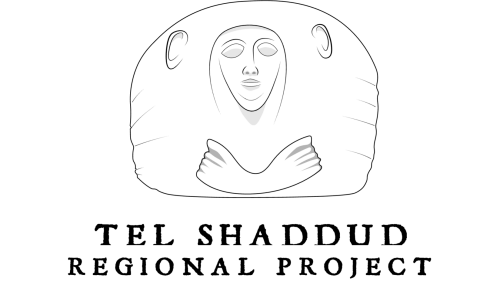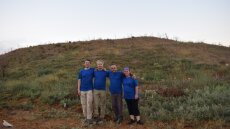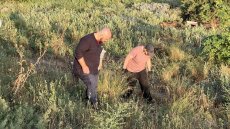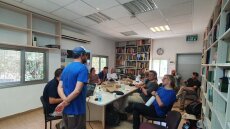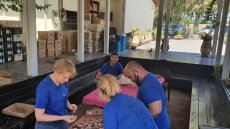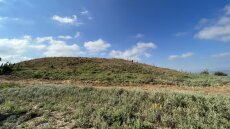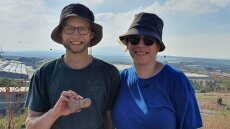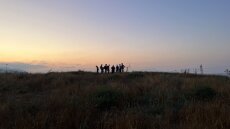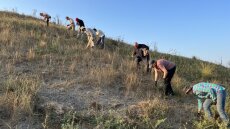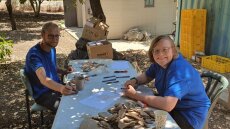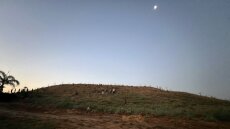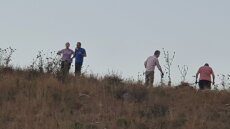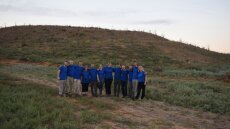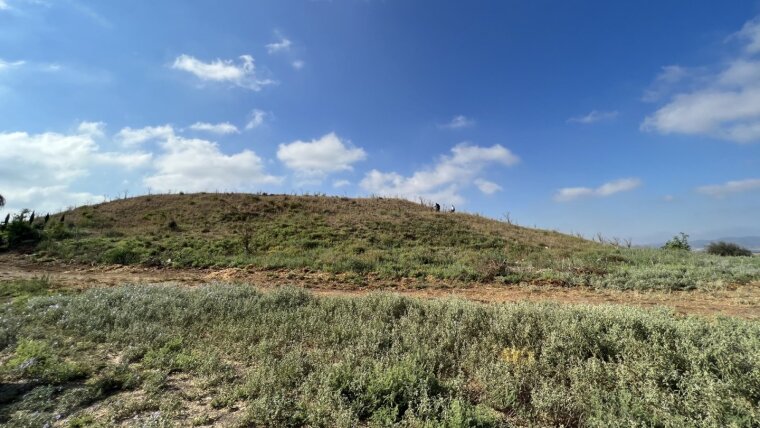
-
Previous Excavations and Occupational History
Tel Shaddud was never excavated, but salvage excavations conducted at its foot in the surrounding fields provide some information on its occupational history. According to these excavations, the site was first settled in the Early Bronze IB (ca. 3350–3000 BCE), when a relatively large and complex village was founded alongside the nearby springs of ‘En Shaddud and stretching to the foot of the tel on all sides. Sometime during the Middle Bronze Age (ca. 1950–1600 BCE) the settlement shrunk in size to the confines of the tel, and was probably fortified. During this period, the areas to the foot of the tel begun to be used as a burial ground. The cemetery at Tel Shaddud was in use for a long period of time, from the Middle Bronze Age and till the Iron IIA (ca. 950 – 800 BCE), perhaps with a hiatus during the Late Bronze Age I (ca. 1600–1400 BCE). During this extended period the settlement concentrated solely on the tel, where it remained at least till the second half of the 9th century BCE. Sometime during the Iron IIB/IIC (8th–7th centuries BCE) the settlement at the site increased again, and expanded to the areas at the foot of the tel. It seems that by the Hellenistic and the Roman Periods the tel itself was abandoned, while the settlement to its foot flourished.
-
The Importance of Tel Shaddud
Salvage excavations at the foot of the site have revealed a large-scale cemetery that was in use continuously from the LB II to the Iron IIA. Among the remarkable finds was a single burial in clay anthropoid coffin, which was made in the Beth-Shean Valley. Similar burials were only found connected to Egyptian centers in Late Bronze Age Canaan in Tel Beth-Shean and in Deir el-Balah near Gaza. Three features of the site, gleaned from the excavations of its cemetery, highlight its significance:
(1) The clay anthropoid coffin may imply that the site was the location of a local administrative center in the service of Egyptian imperial rule, from where the royal lands in the Jezreel Valley were administered, and where their produce was collected and stored before further redistribution. Such installations are well known from LB II–III southern Levant, for instance, in Tel Aphek along the Yarkon Basin, or along the Besor River in the south-west of Canaan and near Gaza. In spite of the fact that textual sources indicate that a similar system was operated by Egyptian imperial rule also in the rural hinterlands of the Jezreel Valley, to date, no such facility has been discovered. The anthropoid coffin from Tel Shaddud may hint that such a facility existed at the site, and thus excavations at the site may shed some new light on Egyptian imperial rule and its agrarian-economic mechanism.
(2) Tel Shaddud is the only site in the Jezreel–Beth-Shean Valleys that demonstrates continuity in burial tradition from the LB II to the Iron IIA, while all neighbouring excavated cemeteries exhibit a marked break in burial traditions at the Iron I to Iron IIA transition. The odd continuity observed in Tel Shaddud may imply that it is similar to Tel Rehov, a site which also survived the transition to the Iron IIA that was connected to the LB II–III to the Egyptian imperial rule.
(3) Tel Shaddud is often identified with biblical Sarid. This site is only mentioned as the border town between the two valley clans/tribes – Issachar and Zebulun (Joshua 19:10, 12), and probably also as the location of the battle commemorated by the Song of Deborah (Judges 5:13). The Song of Deborah highlights the significance of these same valley clans (Zebulun and Issachar) in leading the fighting forces (Judges 5:14–15, 18a). If the site was not inhabited after the Iron IIA, as may be implied from its excavated cemetery, its appearance in these specific texts represents an old memory. -
Research Plan
In light of the above, we intend to conduct a regional archaeological project, focusing on the excavations of Tel Shaddud, and with collaboration of the American expedition to the nearby Tel Shimron. The first step towards such a project is a systematic archaeological survey of the site – on and around Tel Shaddud. The goals of the 2022 archaeological survey at Tel Shaddud are to clarify the borders of the site throughout its occupational history; to identify the main areas of human activity during the Middle and Late Bronze Ages and the Iron Age; to clarify whether the top of the tel was occupied also in the late Iron Age (or whether by this period the settlement already descended to the foot of the tel); to identify and locate future excavation areas.
This is the beginning of a new and exciting project, in which we will delve into the ancient history of the
Jezreel Valley in order to understand its social structure and rural hinterland over a long period of time,
to clarify the Egyptian rule over the region and to gain some new insights into the origins and formation of early monarchic Israel in this valley. Accordingly, it is no less important to build our expedition team for the coming years, and thus we would like to welcome you to the Tel Shaddud Regional Project.
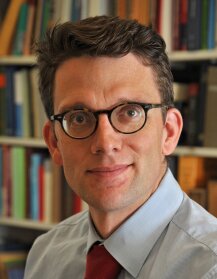
Sprechzeit: nach Vereinbarung
Feriensprechzeit: nach Vereinbarung per E-Mail
